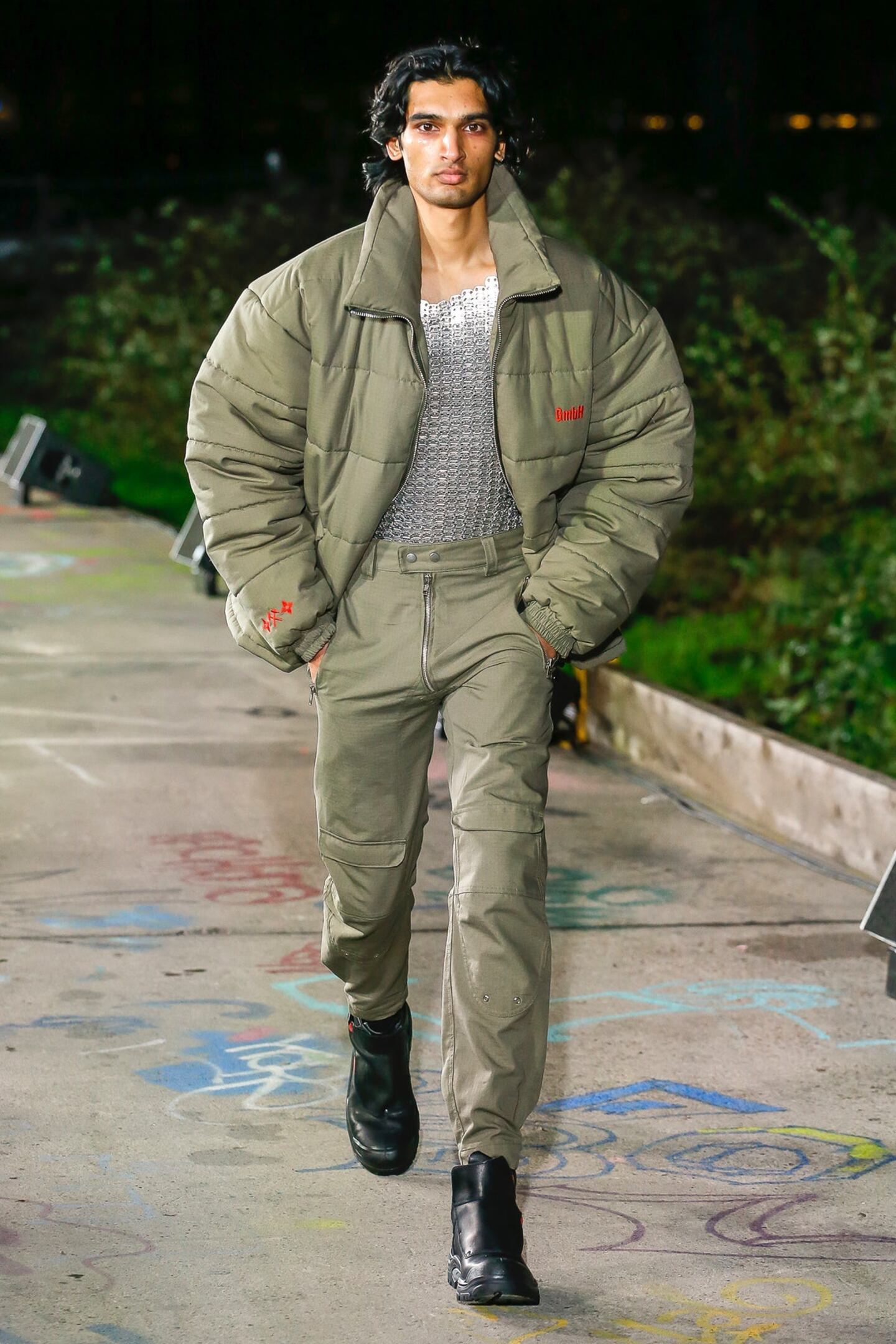
The Business of Fashion
Agenda-setting intelligence, analysis and advice for the global fashion community.

Agenda-setting intelligence, analysis and advice for the global fashion community.

PARIS, France — Mass migration is the issue which has, more than any other, lit a fire under the populist movements driving the world back to a new dark age. Benjamin Huseby and Serhat Isik's experience of life in Berlin gives them intimate insight into the challenges immigrants face. It's inspired them to create GmbH, a collection of clothes as a kind of running social commentary. The provocative notes that accompanied GmbH's invitation referred to "crisscrossed histories of entangled identities and materials" and wondered "Must we choose between here or elsewhere?"
Huseby and Isik aren't alone in asking such big questions. Identity politics has infused fashion's new wave – designers like Wales Bonner, Charles Jeffrey, Gosha Rubchinskiy, even Francesco Risso at Marni. In the collection they showed on Tuesday night, Huseby and Isik ran a gamut. There was the functional sportswear — denim, jersey, shearling, military, motocross — which are such universal fashion tropes at this point that they've taken on a kind of anonymity you could read as a comment on globalisation's reduction of human beings to man-ergs (like the label GmbH, in fact, which is the same as Ltd. or Co. in English). But there was also a strong tailoring story that was partly Isik's tribute to his father and grandfather, who would come home black from their day's work in the mines, then groom and suit themselves up for a night out. The shapely jackets, the pleated pants were all about them reclaiming their own dignity and elegance in the face of a country which didn't want them. "My beauty offends you," was the collection's rubric. The words felt like something that might have a deep personal resonance for the designers.
The weather was absolute shit for the outdoor show, which meant, paradoxically, that it was absolutely perfect. Nico intoned her "Frozen Warnings" while the models walked the length of a railway platform in an abandoned depot. The wind made their eyes tear (a dramatic, if unanticipated, effect). The driving rain was all but horizontal. The mercury was in the basement. Such inclement conditions are a frequent challenge for Europe's disenfranchised and dispossessed. The setting was a reminder that, as Huseby and Isik said, it sometimes feels like we're living in a modern dark ages. There was a dark and curious seam of nu-medievalism in their collection: chain mail tops; a visual reference to the stinging nettle, a plant the designers chose because it was "as unruly and unwanted as Europe's migrants"; and dense embroidery lifted from the traditional Turkish kisbet. "Runic inscriptions bear similarity to arabesque geometries," read those notes. "May the state be banished," they continued. And may a new fashion anarchy prevail.
From where aspirational customers are spending to Kering’s challenges and Richemont’s fashion revival, BoF’s editor-in-chief shares key takeaways from conversations with industry insiders in London, Milan and Paris.
BoF editor-at-large Tim Blanks and Imran Amed, BoF founder and editor-in-chief, look back at the key moments of fashion month, from Seán McGirr’s debut at Alexander McQueen to Chemena Kamali’s first collection for Chloé.
Anthony Vaccarello staged a surprise show to launch a collection of gorgeously languid men’s tailoring, writes Tim Blanks.
BoF’s editors pick the best shows of the Autumn/Winter 2024 season.